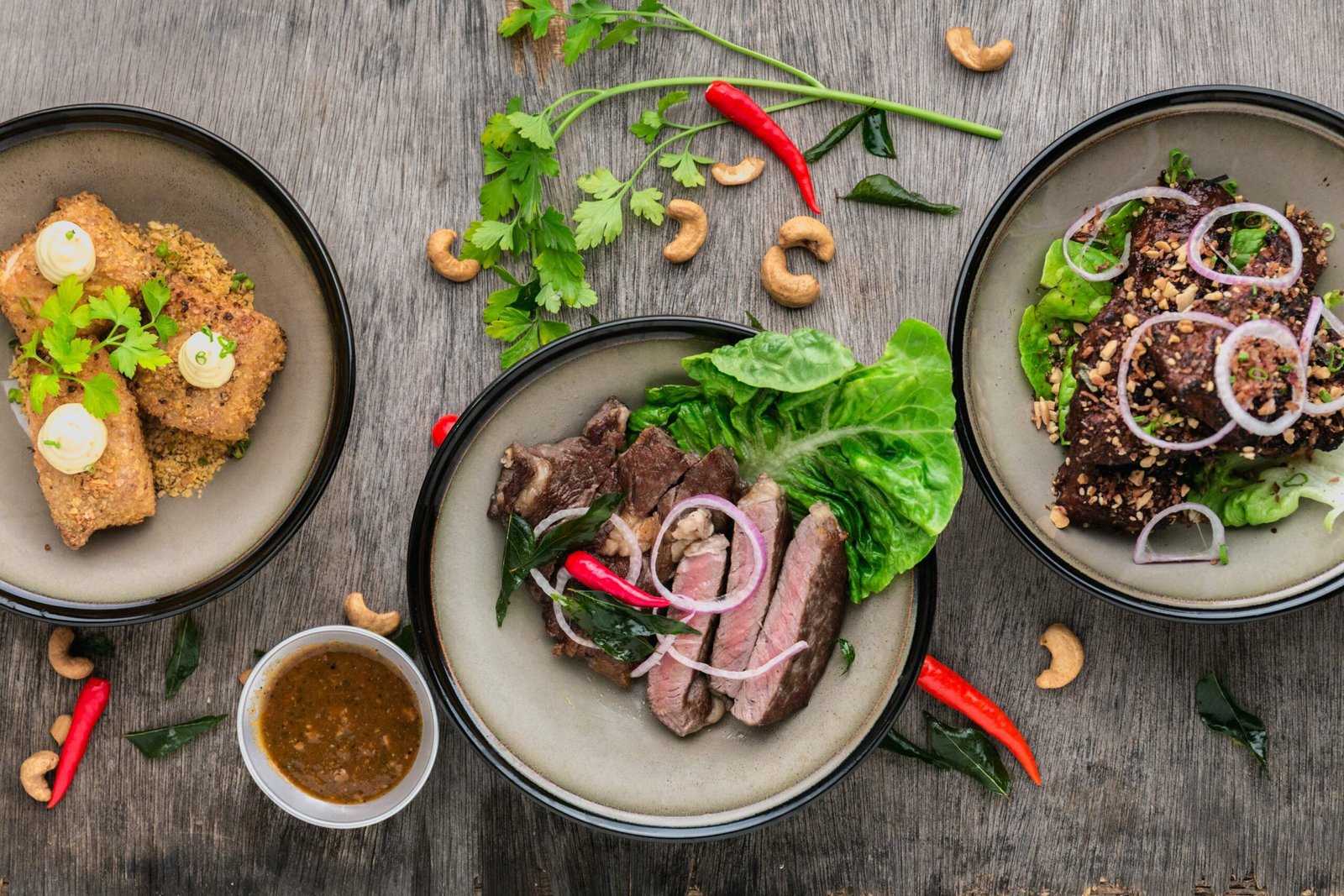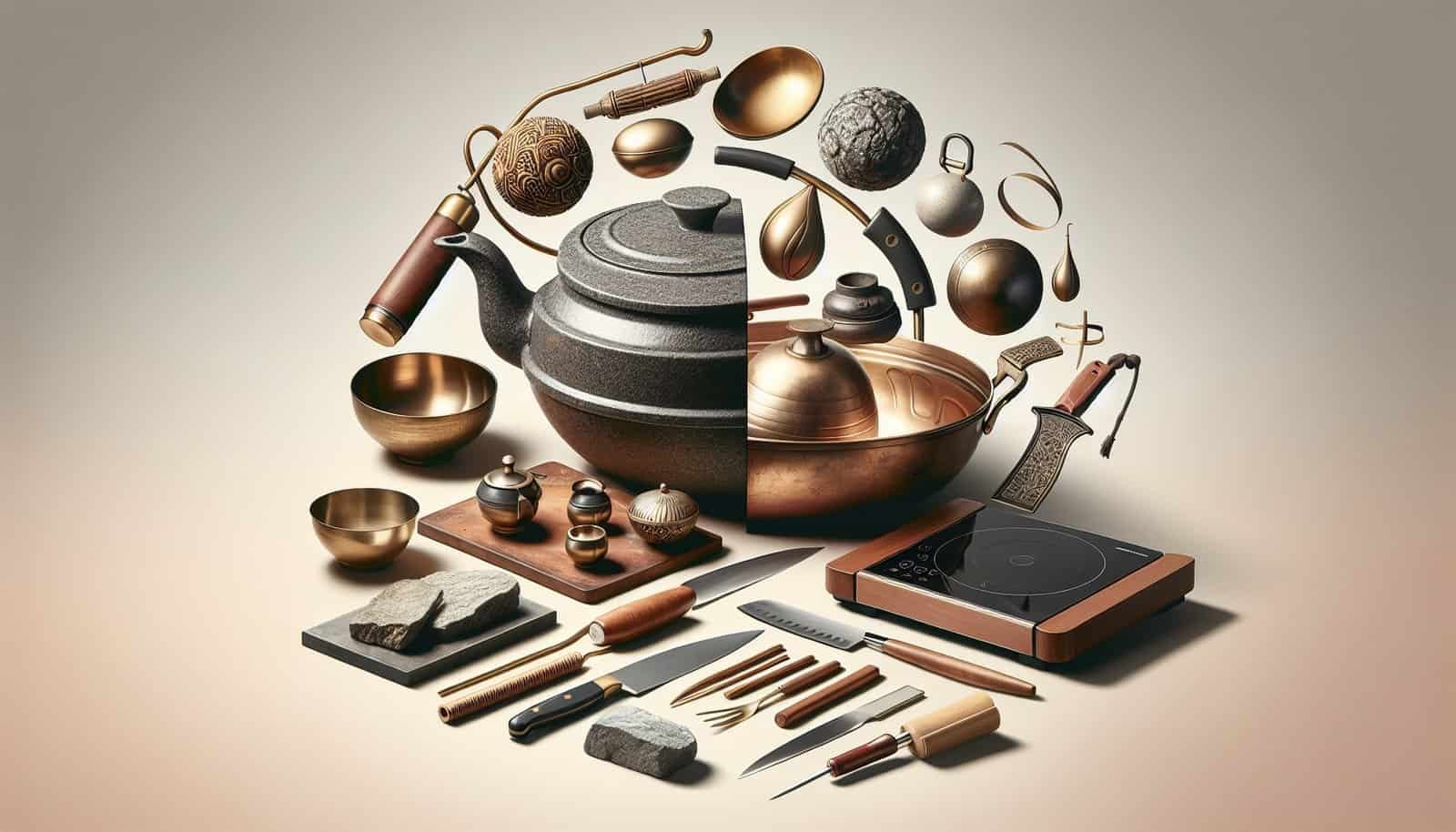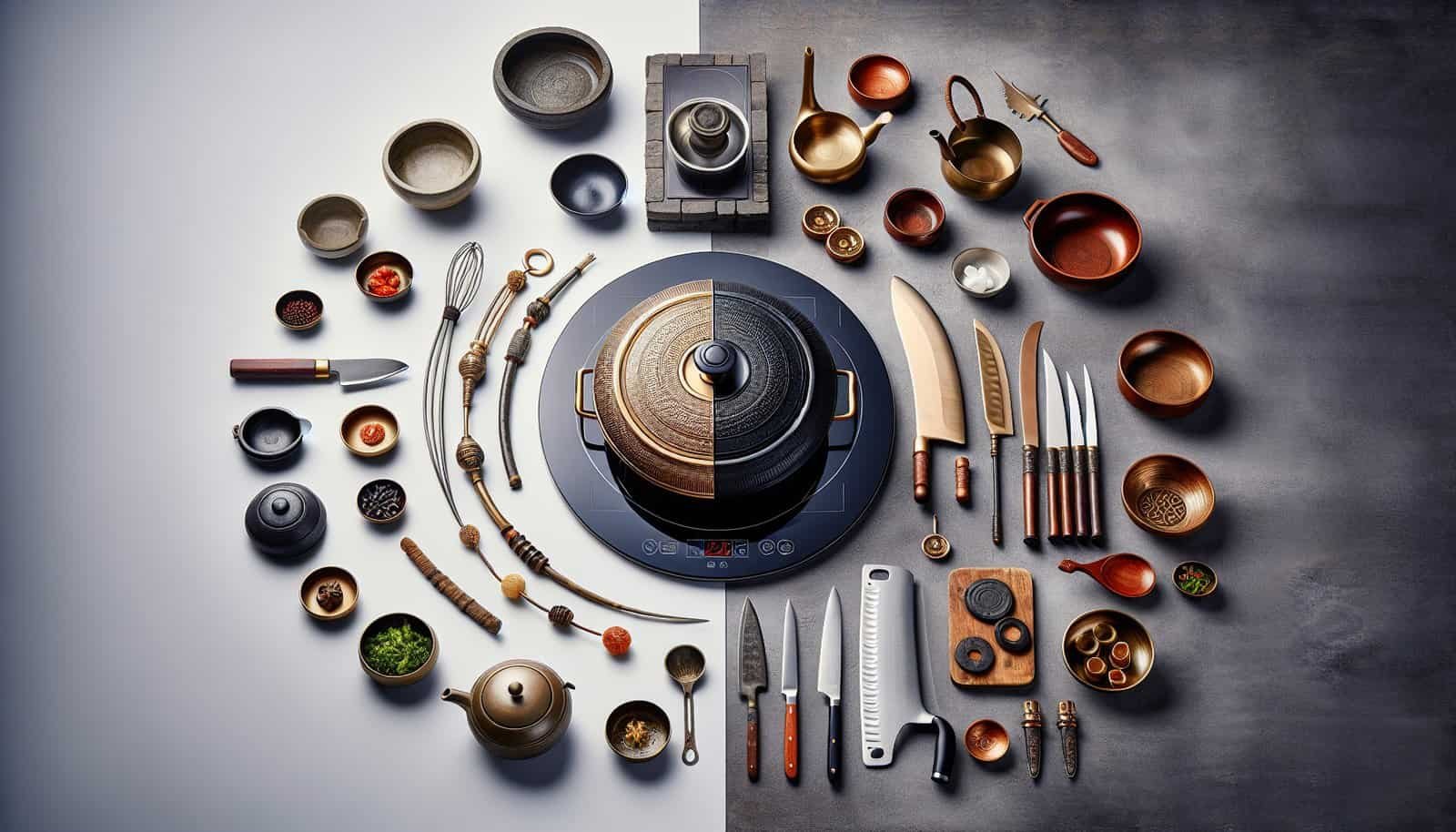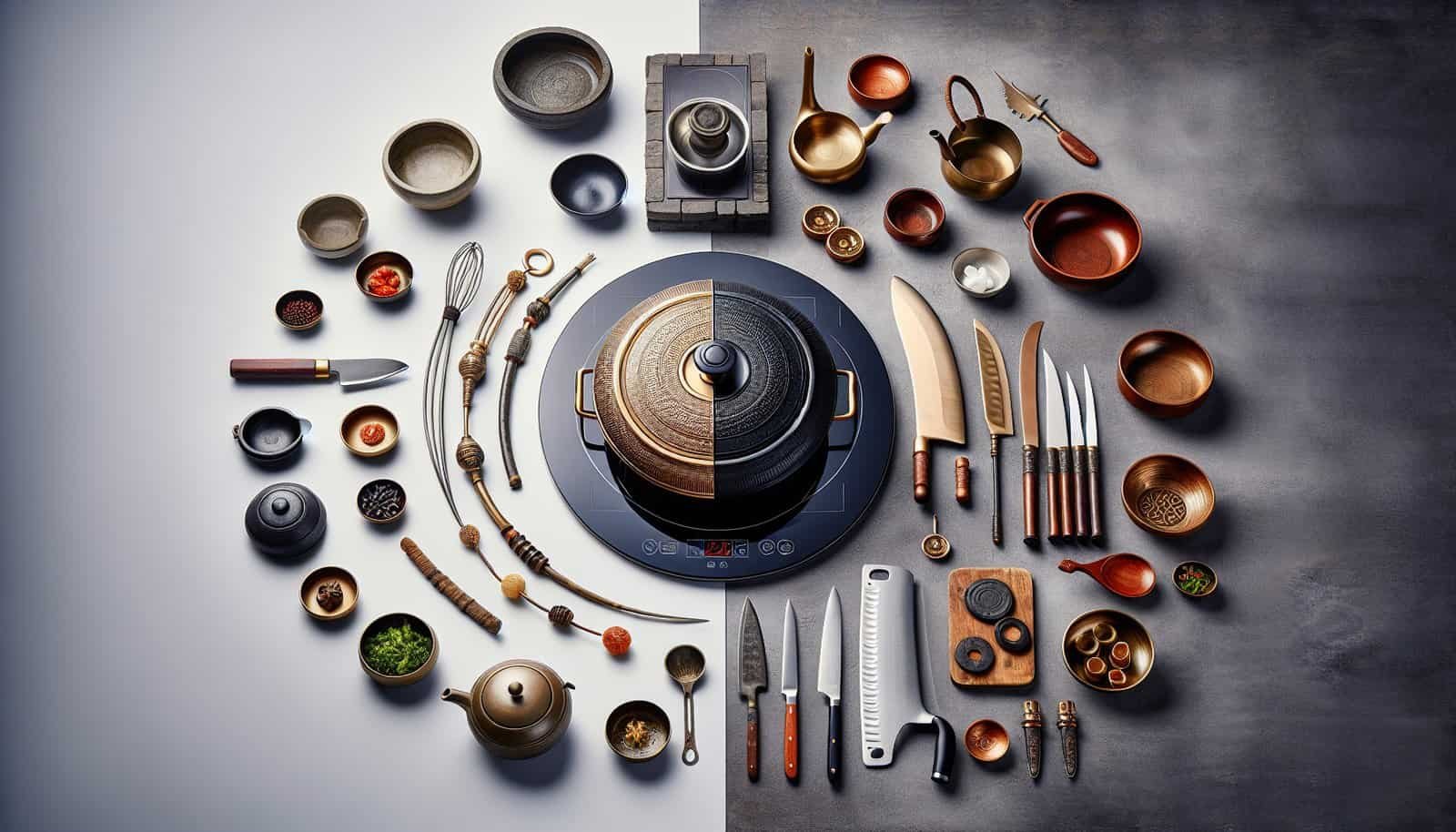Have you ever wondered about the key differences between traditional and modern Korean cooking? In this article, we will explore the distinctive characteristics that set these two styles apart. From the choice of ingredients and cooking techniques to the overall presentation, there are various aspects that distinguish traditional Korean cuisine from its modern interpretation. Join us on this culinary journey as we explore the fascinating contrasts between these two approaches to Korean cooking.
Ingredients
Traditional ingredients
Traditional Korean cooking predominantly uses rice, vegetables, legumes, and meats such as beef, pork, and chicken. Essential ingredients include soy sauce, sesame oil, red pepper paste, garlic, ginger, and fermented products like soybean paste and kimchi. Seafood like anchovies, shrimp, and oysters also play a significant role.
Modern ingredients
Modern Korean cooking has incorporated a wider range of ingredients due to globalization and increased accessibility to international markets. This includes ingredients like cheese, butter, cream, and various spices from different cuisines around the world. Non-traditional vegetables such as broccoli and cauliflower are commonly used in fusion dishes.
Cooking techniques
Traditional techniques
Traditional Korean cooking methods often involve grilling, steaming, boiling, stir-frying, and fermenting. Grilling is particularly popular for meats and fishes, allowing for smoky flavors and a crispy texture. Fermenting, a technique that involves aging food, plays a vital role in traditional Korean dishes such as kimchi and soybean paste.
Modern techniques
Modern Korean cooking techniques have become more diverse, influenced by international culinary trends. Baking, roasting, and deep-frying have become more common, giving dishes a different texture and flavor profile. Sous vide, a method that involves vacuum-sealing ingredients and cooking them in a water bath, is also making its way into modern Korean kitchens.

Presentation
Traditional presentation
Traditional Korean dishes emphasize a balanced and visually appealing presentation. Various banchan (side dishes) accompany the main meal and are beautifully arranged on the table. The use of color and symmetry is key to traditional presentation, with dishes often presented in traditional ceramic or metal bowls.
Modern presentation
Modern Korean cuisine pays attention to both taste and aesthetics. Chefs now focus on creative plating techniques that elevate the visual appeal of the dish. Minimalist presentations on sleek plates and the use of edible flowers or microgreens have become more popular, combining traditional flavors with a modern twist.
Flavors and seasonings
Traditional flavors and seasonings
Traditional Korean cuisine is known for its bold and distinct flavors. The combination of salty, spicy, sweet, and sour is a hallmark of Korean dishes. Gochujang (red pepper paste), soy sauce, and doenjang (fermented soybean paste) are essential seasonings that contribute to the rich flavors found in traditional Korean cooking.
Modern flavors and seasonings
Modern Korean cuisine experiments with a wider range of flavors and ingredients, incorporating international spices and seasonings. Fusion dishes blend traditional Korean flavors with influences from other cuisines, resulting in innovative taste profiles. Ingredients like truffle oil, balsamic vinegar, and even chocolate are finding their way into modern Korean dishes.

Dietary considerations
Traditional dietary considerations
Traditional Korean cooking emphasizes the use of diverse ingredients to create a well-rounded meal. Vegetables and grains play a significant role, making Korean cuisine naturally suitable for vegetarians. Fermented foods like kimchi possess probiotic qualities that promote digestive health.
Modern dietary considerations
Modern Korean cooking has adapted to accommodate various dietary preferences and needs. With an increase in health-conscious individuals, lighter and more nutritious options have emerged. Vegan and gluten-free alternatives are now readily available, ensuring that everyone can enjoy the flavors of Korean cuisine.
Meal structure
Traditional meal structure
Traditional Korean meals consist of multiple banchan (side dishes), rice, soup, and a main dish. Each component serves a specific purpose, with rice considered the main staple. A balance of flavors, colors, and textures is achieved through the combination of various dishes, encouraging communal dining experiences.
Modern meal structure
Modern Korean meals have become more flexible and reflective of individual preferences. Single or multiple-course meals are common, with an increased focus on the main dish. Rice and banchan still play a role but are often served in smaller portions. The emphasis is now on providing a satisfying and diverse dining experience that caters to personal tastes.

Influence of globalization
Traditional influence of globalization
Traditional Korean cooking traditions have been influenced by globalization, particularly through the introduction of ingredients brought by traders and neighboring countries. For instance, chili peppers, originally from the Americas, were introduced to Korea in the 16th century and have since become a fundamental component of Korean cuisine.
Modern influence of globalization
Modern Korean cooking continues to be shaped by globalization. Western ingredients, cooking techniques, and even fast food culture have made their mark on Korean cuisine. Korean fried chicken, for example, is a popular hybrid dish that combines Korean flavors with the cooking method used in American fried chicken.
Regional variations
Traditional regional variations
Traditional Korean cuisine exhibits distinct regional variations throughout the country. The cuisine in the coastal regions often features an abundance of seafood, while the mountainous regions focus on preserving and fermenting ingredients. Jeolla province is well-known for its special dishes, such as bibimbap and gujeolpan.
Modern regional variations
Modern Korean cuisine continues to evolve regionally, with local specialties gaining international recognition. Cities like Busan are famous for their seafood dishes, while Seoul offers a mix of traditional and modern fare. The blending of regional flavors and ingredients creates a diverse culinary landscape across Korea.

Use of technology
Traditional use of technology
Traditional Korean cooking relied heavily on simple and manual preparation techniques. Home cooks would use basic tools like traditional pots, stone grinders, and wooden utensils. Techniques such as fermenting relied on natural processes rather than technological advancements.
Modern use of technology
As technology has advanced, modern Korean cooking has incorporated various kitchen appliances and gadgets. Electric rice cookers, blenders, and food processors have made meal preparation more convenient and efficient. Sous vide machines and modern grills enable precise temperature control for consistent results and enhanced flavors.
Role of convenience foods
Traditional role of convenience foods
Traditionally, convenience foods were not widely available or commonly used in Korean cooking. Meals were typically prepared from scratch using fresh ingredients. However, certain convenience products like dried anchovies or pre-made kimchi paste were occasionally used to save time in the fermentation process.
Modern role of convenience foods
With changing lifestyles and busier schedules, convenience foods have gained popularity in modern Korean cooking. Pre-marinated meats, pre-packaged banchan, and ready-made sauces are readily available, catering to those who desire authentic flavors but lack the time for extensive preparation. While convenient, it is important to strike a balance between convenience and the traditional art of Korean cooking.
In conclusion, the key differences between traditional and modern Korean cooking lie in the ingredients, cooking techniques, presentation, flavors, dietary considerations, meal structure, globalization’s influence, regional variations, use of technology, and the role of convenience foods. As Korean cuisine continues to evolve, maintaining a balance between preserving its rich traditions and embracing modern innovations ensures its diverse and delicious flavors will continue to captivate food enthusiasts worldwide.

